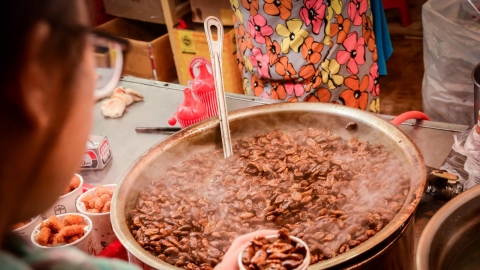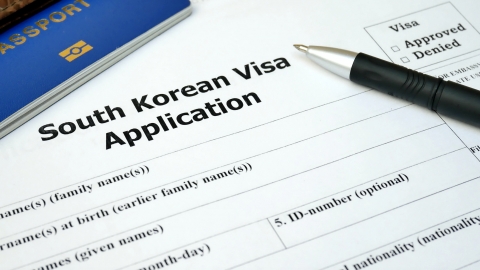Special journey
The trip to North Korea was a trip that gave me truly special feelings. A lot of information about North Korea shared through the media made everyone think that it was a dangerous place. I also felt afraid to go there alone, so I decided to find a friend - someone who had been to North Korea before - to ask for advice. It took me 3 months of planning before I started my journey.
The fastest and most convenient way to get to North Korea is to fly to Beijing (China) and then transfer to Pyongyang - the capital of North Korea. But because of my passion for discovery, I chose another, more complicated route to start my trip. From Ho Chi Minh City, I flew to Guangzhou, transferred to Shenyang and then changed to a train. Taking a taxi to Shenyang station, I boarded a train at 5:30 am to Dandong city (China), completing the last leg of the journey with the China - North Korea railway connecting Dandong with Pyongyang.
The train journey from the Chinese border to the capital Pyongyang was a beautiful journey and I saw with my own eyes the lives of the North Korean people. I was lucky to arrive in North Korea during the golden rice season. The rice fields stretching for dozens of kilometers passed by the train window, making me fascinated and unable to take my eyes off. The local people may not be too rich, not too prosperous, but they have a peaceful life and a gentle peace.
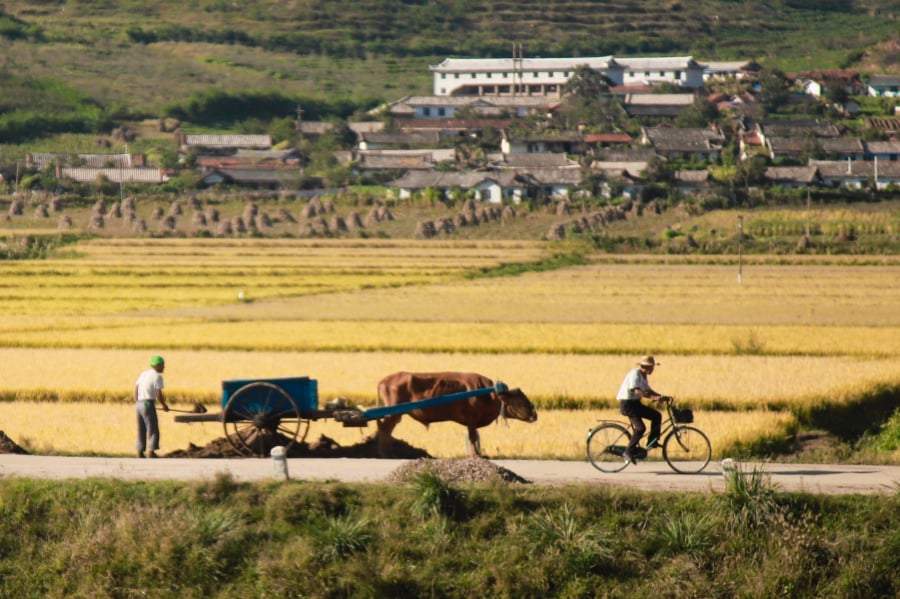
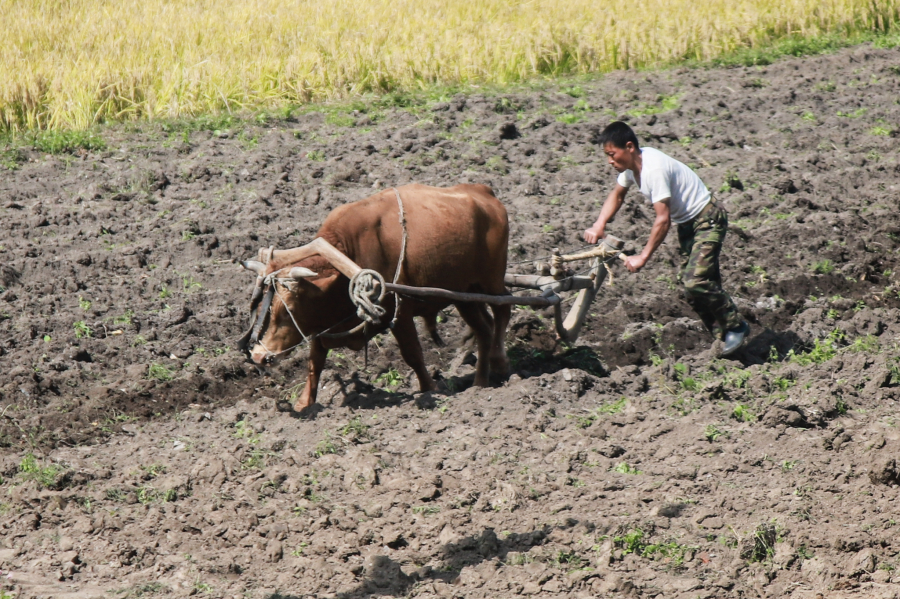

At the end of the 6-hour train journey, I was greeted by two beautiful Korean girls as soon as the train opened for passengers to get off. What was particularly impressive was that one of the girls spoke Vietnamese very well, which made me feel that this place was very interesting.
Pyongyang: Clean and Disciplined
According to North Korean regulations, all visitors must purchase a tour through a local travel agency and the agency will take care of your entire itinerary. The tour company in North Korea sent three people (a driver and two guides) to take care of the two of us.
Our journey to explore North Korea started in Pyongyang. In my eyes, Pyongyang looks a bit old but still exudes neatness and high discipline. The streets of Pyongyang are extremely clean, no trash anywhere. Early mornings here are very bustling. On the main roads, some people exercise, some children stand in formations beating drums and blowing horns to signal. People from high-rise buildings rush out to the streets, to the train stations to go to work. Their clothes are not updated with world fashion but are very polite. But the city space at noon is often much quieter.
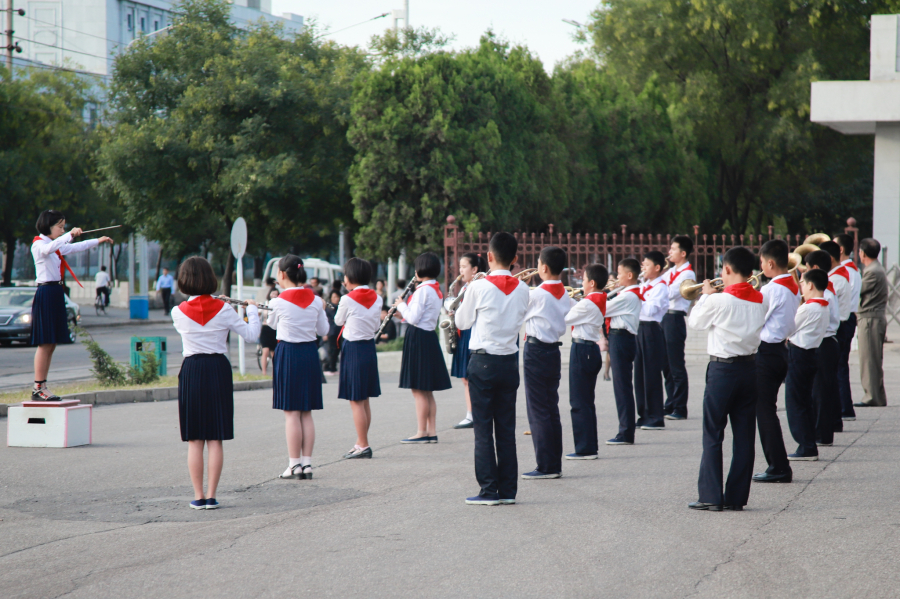
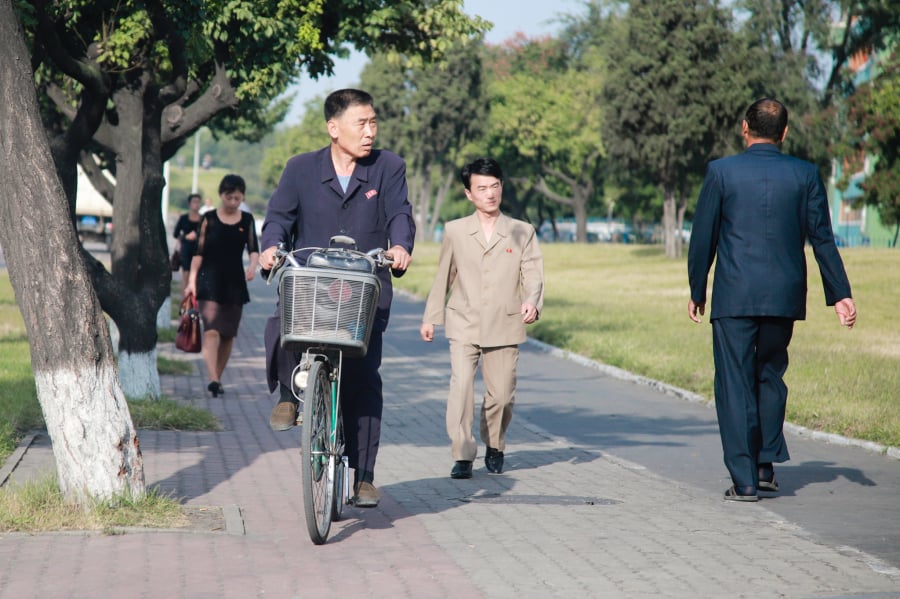
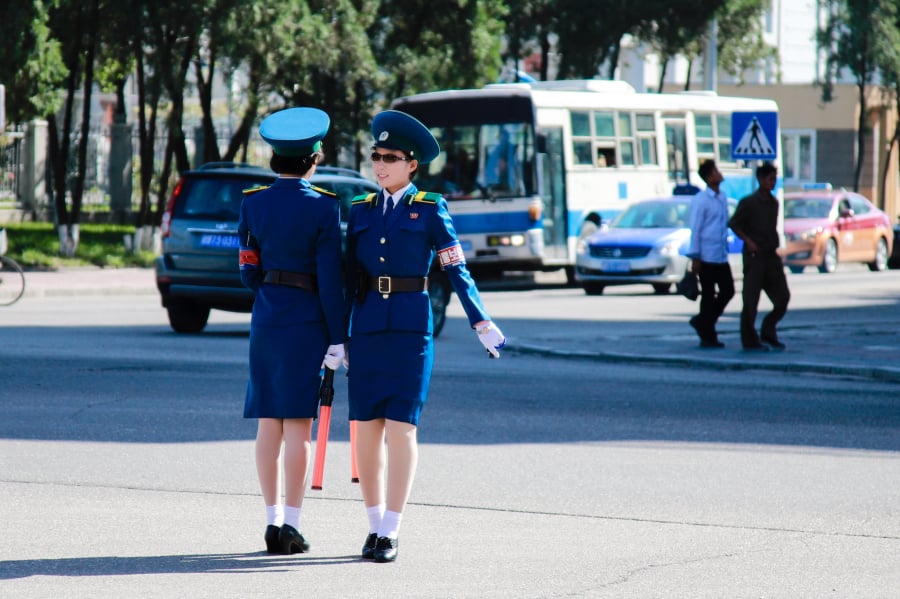
Kim Il Sung Square is the largest square in Pyongyang as well as North Korea and is where major national events such as festivals, parades, meetings on National Day take place... Opposite this square is the Juche Ideology Tower which represents the social ideology of North Korea. From there, we went to the giant statues of Kim Il Sung and Kim Jong Il - where North Korean people often come to bow, pay respects or offer flowers in memory. Many people come here to bow and offer flowers every day before going to work.

Not far away is Mansudae Park, where Koreans often take wedding photos. Although they use modern and advanced equipment, the way they take wedding photos is very fun and intimate, often with generations of the family taking photos together. They will have fun together to create photos, for example: the bride and groom pretend to play tug of war and then the groom falls into the bride's lap, or both sit on a swing, go for a walk... or somewhat similar to the wedding photos of Vietnam in the past. The men's wedding costume is usually a vest, the women wear traditional Hanbok with many bright colors.
In Pyongyang, we also visited many interesting places such as the Stamp Museum, which exhibits many stamps from different periods in North Korea. The Pyongyang Children's Cultural Palace is where children in the capital Pyongyang are registered to study all subjects, from sports, entertainment, music to science and technology... in an environment with better supporting equipment. We also saw a children's concert at this cultural palace with many unique, fun and colorful performances. In particular, here we discovered that North Korea uses the Kim Il Sung calendar with a completely different number of years than the common calendar of the world.

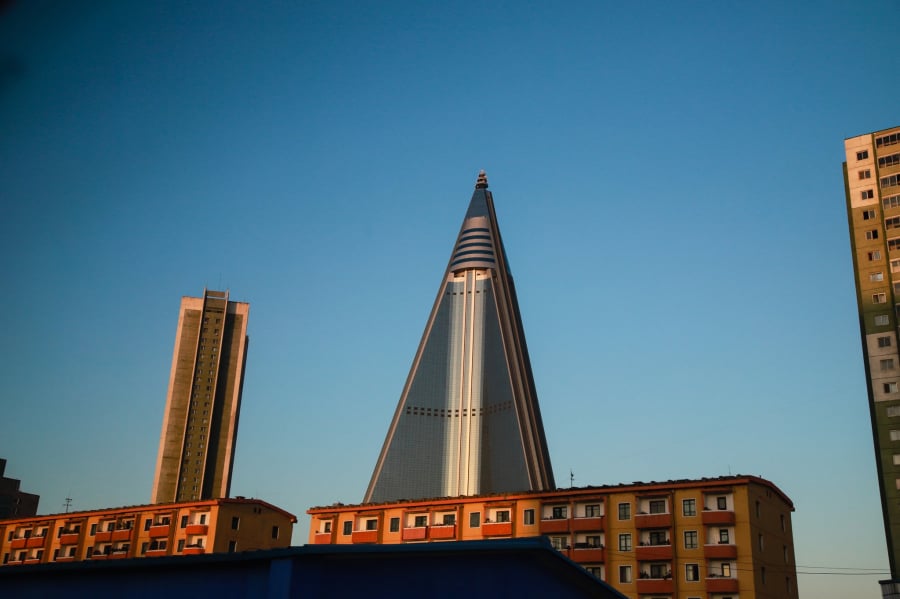
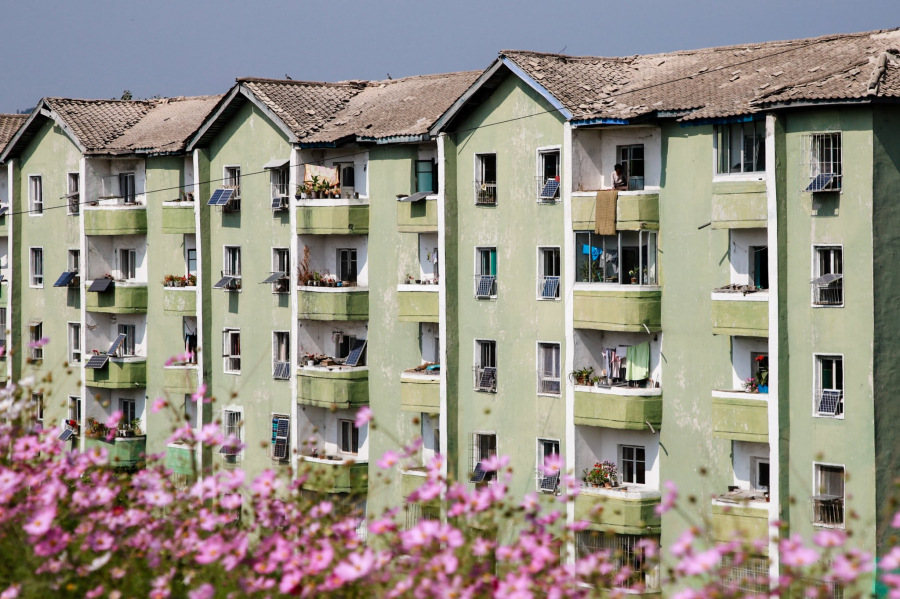
Panmunjom, the North-South border
After lunch in the historic city of Kaesong, in North Hwanghae Province, we continued to Panmunjom - the border line separating North and South Korea. On the way, we had to pass through many security checkpoints to reach the border area. Here, after completing procedures with the military management side, we and some groups of Chinese tourists entered a room to listen to the soldiers here guide and explain the historical background of this land, then were taken by a specialized military vehicle to the border.
After driving for about 5 minutes, passing through the barren grasslands, we saw rows of grey and green buildings built on the border between South Korea and North Korea. This is where the Korean War Armistice Agreement was signed in 1953. The building where the Agreement was signed still exists today, located in the Korean Demilitarized Zone and is considered one of the last relics of the Cold War.
Our tour was quiet and solemn. The soldier who was our tour guide was very serious, not joking around during the explanation and conversation. When he heard that we were from Vietnam, he immediately showed a very different attitude, a strange joy, a friendly sympathy for us. He also asked a lot about Vietnam and seemed to be very knowledgeable about the wars that took place during the Vietnam War. As a rule, North Korean soldiers never take photos with all tourists, but this soldier was very excited and willing to take a souvenir photo with us.
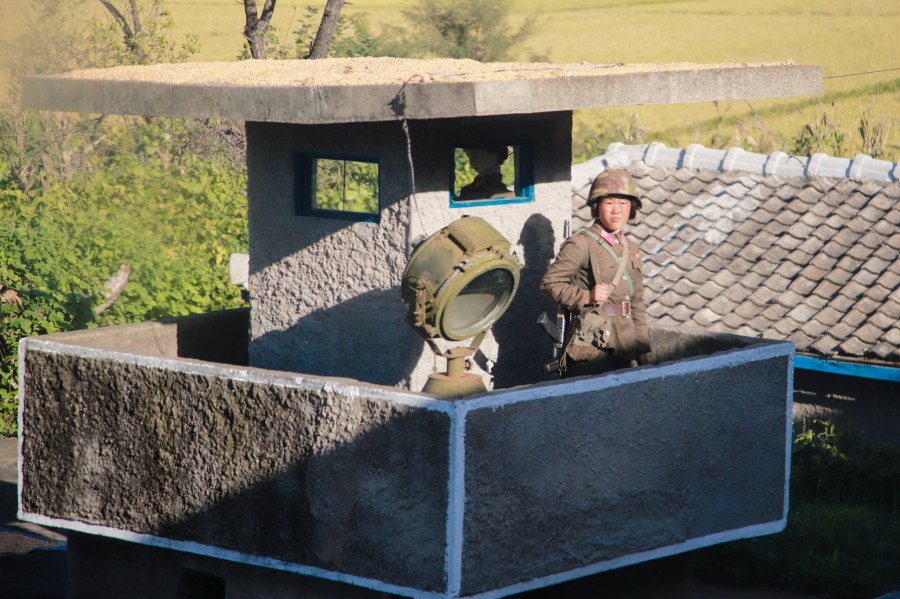
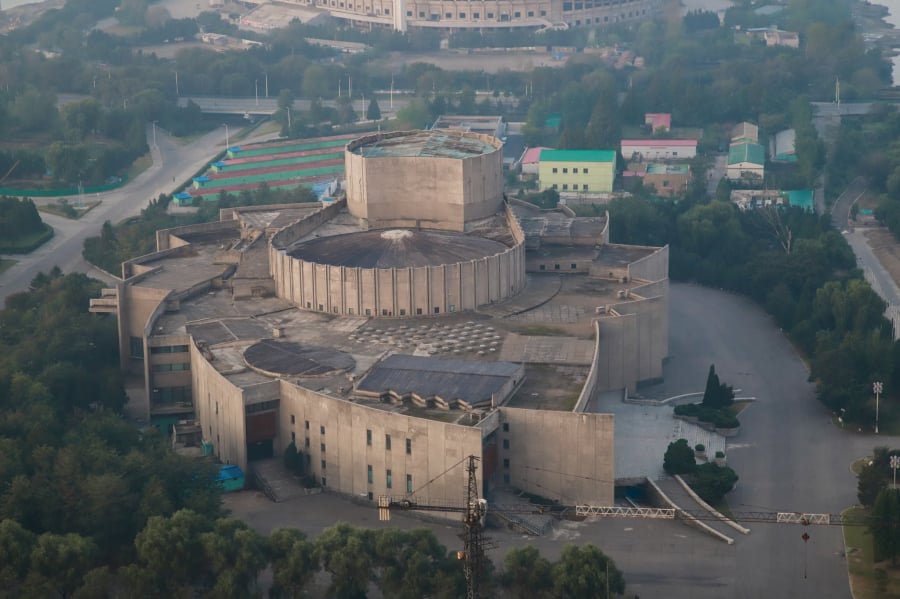
Panmunjom now does not bring visitors anxiety or fear of war, but it still gives me the feeling of remembering a time of fierce war between the two regions, and still lingers the sadness when the two regions have not yet unified. I left Panmunjom with a little sadness, because I feel that the Korean people are very gentle, and they also like peace to live well.
"The first mountain of Korea"
The following days I spent exploring Mount Kumgang (in Vietnamese means Diamond) - the mountain known as "The First Mountain of Korea". 1,638 m high, stretching at the northern end of the Taibai mountain range on the East coast of the Korean peninsula, Mount Kumgang is home to unique vegetation, beautiful scenery with captivating waterfalls. Spiritually, North Korean and South Korean people consider Mount Kumgang a holy land, a sacred mountain. Today, despite many difficulties in immigration procedures, millions of Koreans still visit Mount Kumgan every year.
Mount Kumgang is located near the border of North Korea and South Korea, so the military controls it very tightly. I had to go through many rounds of military security before reaching the foot of the mountain. The road up to Mount Kumgang presented before my eyes a majestic natural landscape. The tour guide told me that the beauty of this place changes with the seasons: in spring, hundreds of flowers bloom; in summer, romantic clouds drift over the steep hills, covered with green trees; in autumn, maple leaves cover the mountain with a brilliant red coat; in winter, white snow covers the mountain top. And I was truly impressed by the beauty of Kumgang. Not only that, Mount Kumgang also has many famous sacred temples such as Kwanum Pagoda, Myogil-sang Buddha, Phyohun Pagoda and beautiful natural lakes and stone pillars.
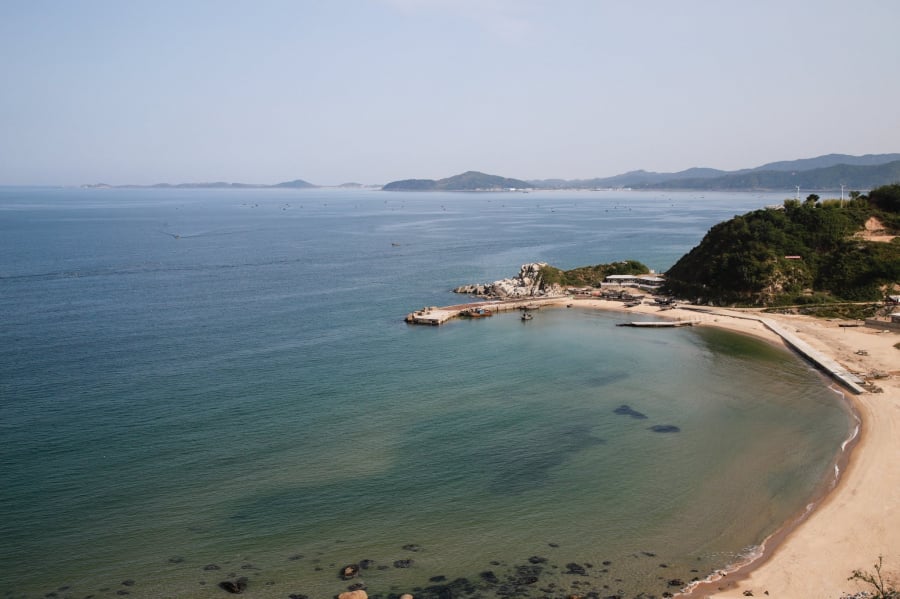
The mountain climbing journey gave me the opportunity to meet many Koreans, who were also tourists coming to admire the natural landscape. I was surprised to see foreign tourists coming here and not talking much with us due to language differences, but they still showed their friendliness and cheerful attitude. When receiving some oranges I gave them, two children - children of a Korean couple - were shy and hesitant. It seemed that they had few opportunities to meet strangers from outside. I was surprised and delighted to see many Vietnamese products sold in shops along the way to Mount Kumgang, such as Saigon beer, snacks, dried jackfruit...
At the top of the mountain, I met a group of Korean people who were dancing and singing and joined in. It was a moment that I will remember deeply, because we - people from two different countries - had the opportunity to be together so close, as if there was no geographical or cultural distance.
Epilogue
My trip to North Korea made me realize that the information we receive from the media is not exactly the same as the real experience. Although there are still many rules that tourists must pay attention to, North Korea is peaceful and not as dangerous as many people imagine. And I can assure you, the journey to explore North Korea will give you many emotions that you will remember forever.
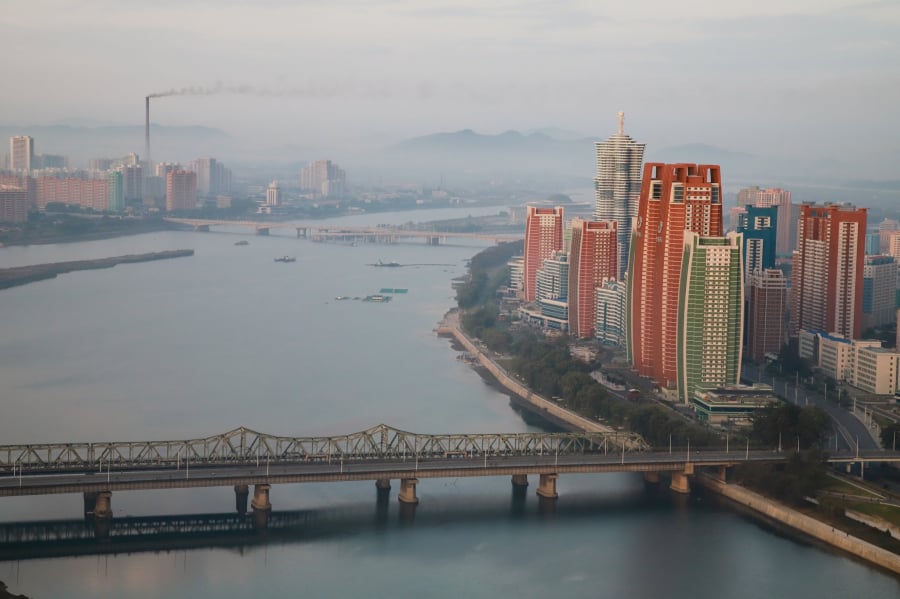
MORE INFORMATION
-Visa:To get to North Korea, most visitors must travel from China and require a passport and visa or travel document to enter. North Korean travel agencies can assist you with this process.
-Tour:According to the regulations of the North Korean Government, tourists are not allowed to travel independently in this country but must buy a tour from a travel company. In Vietnam, there are many reputable travel companies such as Vietrantour, Saigontourist, Fiditour, Viet Global... that provide package tours to North Korea to serve Vietnamese tourists. The cost for a 5-day, 4-night trip is about 33,000,000 - 38,000,000 VND/person.
-Money:Visitors are not allowed to use North Korean currency (North Korean won), so bring Euros or Chinese Yuan. Make sure you have enough cash for the trip as there are no ATMs or foreign exchange services.
-Cuisine:Quite similar to Korean cuisine but also has many traditional dishes that are only available in Korea. The dishes here are delicious and the restaurant's service style is always enthusiastic and attentive.
-Things to note:
+ Most tourists are required to bow and lay flowers before the statue of late President Kim Il Sung when visiting national monuments.
+ Tourists are not allowed to chat freely with all the locals.
+ Do not take pictures without permission. Do not take pictures freely without following the tour guide. Places to note are airports, government buildings, military areas, transportation centers or places that are not part of tourist areas.
+ At night, you are not allowed to leave the hotel and must have a tour guide with you wherever you go.


























